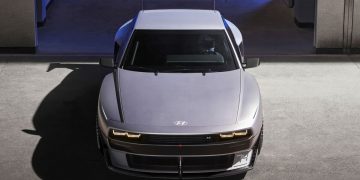From Sensible Sedan Maker to JDM Revival Hero
For decades, Toyota was known first and foremost as a practical automaker. Words like “reliable,” “efficient,” and “family-friendly” dominated its brand image. While models like the Supra and AE86 once carried performance street cred, the 2000s and early 2010s saw Toyota take a step back from the excitement of the enthusiast world. That is, until 2020, when the GR—short for Gazoo Racing—lineup exploded onto the global scene. In the span of just five years, Toyota transformed from a fuel-sipping commuter brand to the maker of some of the most sought-after performance vehicles in the Japanese Domestic Market (JDM) scene.
The rise of GR wasn’t accidental. It was rooted in a growing hunger for analog driving pleasure, manual transmissions, and track-tuned street cars that didn’t cost six figures. It answered a question many gearheads had been asking for years: would a major automaker ever embrace the spirit of 1990s JDM cars again? The GR series didn’t just answer—it reignited the fire.
What Exactly Is the GR Series?
Gazoo Racing, Toyota’s official motorsport division, began with humble roots in endurance racing. But it wasn’t until Akio Toyoda—Toyota’s CEO and a self-declared car enthusiast—pushed for a performance revival that GR made its way from track to street. The GR series isn’t just one car, but a sub-brand encompassing several models, each tuned for driver involvement.
The lineup includes:
- GR Yaris: A homologation rally car disguised as a subcompact hatchback
- GR Supra: A modern revival of the legendary sports coupe, co-developed with BMW
- GR86: The spiritual successor to the AE86, designed for affordable rear-wheel-drive thrills
- GR Corolla: A turbocharged, all-wheel-drive hot hatch that redefines the segment
Each model has been lauded for its raw, tactile driving experience—an anomaly in an era where electric steering and driver assists often isolate the person behind the wheel.
Fan Culture and Community: More Than Just Owners
What transformed the GR series from a set of cars into a movement was its fan culture. From the outset, Toyota didn’t just release cars—it released experiences. GR events, track days, and community-led meetups exploded in popularity. You didn’t need to own a GR to be part of the culture; enthusiasts followed every development, spec sheet update, and YouTube dyno run with rabid interest.
Online forums, TikTok builds, and Instagram reels pushed the visibility of the GR badge into viral territory. People weren’t just test-driving these cars—they were modifying them, racing them, and treating them as spiritual successors to icons like the Supra MK4, the Celica GT-Four, and even the MR2. That legacy appeal, combined with modern engineering, made the GR series irresistible to a new generation of drivers who had grown up watching Initial D and playing Gran Turismo.
Limited Editions and Global Scarcity: Supply Meets FOMO
Toyota’s strategy of controlled supply added fuel to the fire. The GR Yaris, for example, wasn’t even available in the U.S., making it an instant cult object. The GR Corolla arrived with limited allocations, and rumors of dealer markups only heightened desire. Enthusiasts lined up for months or paid above MSRP just to get their hands on one.
Special editions like the GR Supra A91-CF (Carbon Fiber edition) and GR Corolla MORIZO Edition sold out instantly. These models weren’t just minor trim changes—they included stiffer chassis, reduced weight, and track-specific tuning. Toyota made it clear that GR wasn’t a branding exercise; it was an invitation to be part of something rare and visceral.
Scarcity in the GR world created not frustration, but obsession. Pre-order forums lit up with VIN tracking spreadsheets. YouTubers documented every delivery. Street sightings were met with camera flashes and admiring nods. Suddenly, a Corolla—long the face of utilitarian commuting—was parked next to GT-Rs and Evos at car meets, holding its own.

The GR Philosophy: Built by People Who Love to Drive
One of the keys to the GR series’ credibility is the people behind it. Chief engineers and test drivers—many with motorsport pedigrees—were given unusual freedom to build cars from the ground up. The GR Yaris was famously designed with a unique chassis combining the front of the GA-B platform and the rear of the GA-C, solely to allow all-wheel-drive and a wide track.
Akio Toyoda himself tested prototypes on Nürburgring and local circuits, demanding driver feedback before signing off. The brand emphasized “waku-doki”—the Japanese phrase for heart-pounding excitement. That mindset bled into every panel, every shift point, every exhaust note.
Toyota took risks, too. Manual transmissions returned in a world going automatic. Mechanical limited-slip differentials were offered stock. Adjustable suspension came standard on GR86 track packages. Unlike many “sport trims,” the GR series cars were engineered, not cosmetically rebranded.
The JDM Revival: GR as Heir to the Golden Era
The 1990s were considered the golden era for Japanese performance cars: the Skyline GT-R, NSX, RX-7, and Supra ruled streets and circuits. But emissions, economics, and changing tastes led to a lull in Japan’s performance market. For nearly two decades, only the Subaru WRX STI and Nissan GT-R R35 carried the torch, while others faded into history.
Enter the GR series. Suddenly, fans who had mourned the death of fun, affordable JDM cars were gifted a renaissance. The GR86 called back to the AE86, balancing simplicity with sharpness. The GR Supra rekindled the legend. The GR Yaris brought rally-bred AWD magic back to the streets. And the GR Corolla combined sleeper looks with riotous performance.
Tuner shops from Osaka to Ontario began specializing in GR upgrades. Custom body kits, coilovers, ECUs, and exhausts appeared overnight. Magazines declared the “Return of the Japanese Sports Car,” and GR models started showing up in international racing series, including WRC, Super GT, and grassroots autocross events.
Crossover Appeal: From Purists to TikTok Racers
One of the unexpected aspects of the GR series is its broad appeal. Older purists, nostalgic for their 1990s garage dreams, love the raw handling and engineering purity. Meanwhile, younger buyers—many of them discovering cars through digital platforms—are drawn to the aggressive styling, social media hype, and mod potential.
TikTok influencers document their GR Corolla builds with cinematic flair. Twitch streamers showcase virtual versions in sim rigs. GR cars are as much about image as they are about engineering—but for once, the hype matches the drive. This dual appeal made GR cars omnipresent in both the digital and physical car scenes.
Even non-car people recognize the badge now. The red-and-black GR emblem has become a mark of rebellion in a sea of beige SUVs and CVT crossovers.
The Motorsport Tie-In: GR Is More Than Marketing
Toyota’s decision to anchor the GR brand in real racing paid off. The GR Yaris exists because of FIA homologation rules—Toyota needed to build a production version to enter WRC. The GR Supra competes in GT4 and Super GT. Even the GR86 has its own one-make racing series. This motorsport DNA legitimizes the badge in a way few other brands can claim.
Unlike sport trims built on marketing checklists, GR cars feel born from the track. And that matters. Owners know their GR86 shares geometry with its race sibling. GR Yaris owners proudly tell strangers their car is banned in America because it’s “too legit.” This racing tie-in isn’t just aesthetic—it’s cultural.
The Future of GR: Electric Possibilities and Enthusiast Fears
As emissions regulations tighten and automakers pivot toward EVs, the question hangs in the air: can GR survive the electric future? Toyota has hinted at electric sports car concepts with simulated manual transmissions and performance tuning. But for many purists, the sound and soul of a combustion-engine GR86 or GR Yaris can’t be replicated.
Still, if any brand can bridge the gap between old-school thrills and new-age tech, it’s Toyota. They’ve already shown willingness to innovate without compromising passion. Whether GR goes hybrid, hydrogen, or full electric, the spirit of analog fun might just evolve rather than disappear.
For now, though, the GR cult lives on—shifting, rev-matching, and turbo-spooling its way into the hearts of enthusiasts who thought cars like this were long gone.


































Discussion about this post